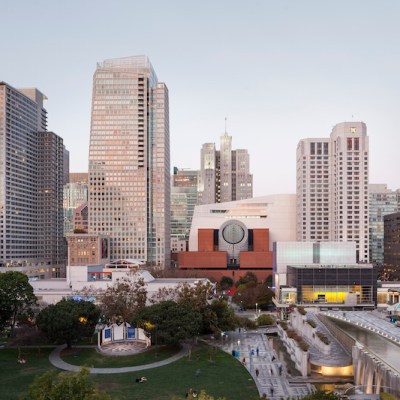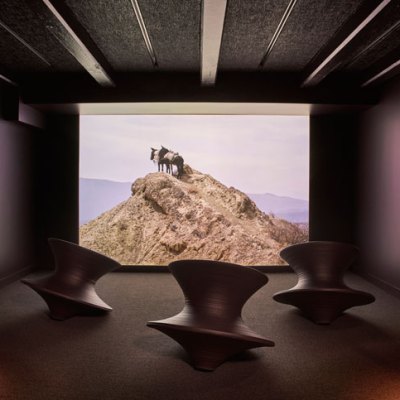Where might you expect to find William Hogarth’s fine and recently restored portraits of William and Elizabeth James, or a lobby-filling Roman floor-mosaic from Antioch that depicts a lively lion and antelope hunt? Or Otto Dix’s painting of a pregnant woman, which has its own visitors book nearby, so that people can record their usually extreme reactions to it? And which collection may have unearthed a newly identified Leonardo? If I gave you a clue and said it was in the Boston area you might guess at the Museum of Fine Arts (MFA), but you’d be wrong. They all belong to the Worcester Art Museum, which is an hour’s train ride away from the MFA, and whose exceptional encyclopaedic collection is being systematically rethought by Matthias Waschek, its director since 2011.
‘Worcester Hunt Floor Mosaic’, 6th century AD, Roman, excavation of Antioch and vicinity. Worcester Art Museum, Massachusetts
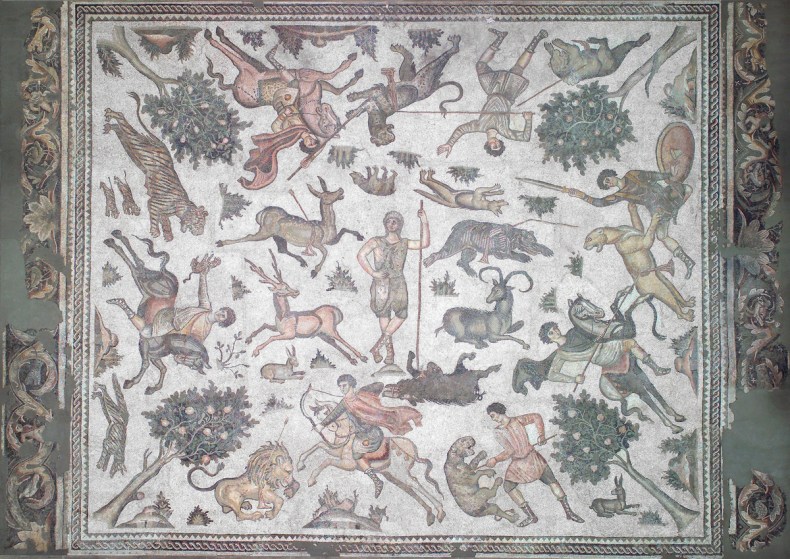
‘We aren’t part of Boston, but we are,’ says the fast-talking Waschek, with barely a trace of his native German accent. The Worcester Art Museum stands alone – it is a 90-minute drive from the other major museum in the area, the Wadsworth Atheneum. But it will soon be tantalisingly close to New York, when daily flights to Worcester begin this May. ‘The big problem we have is that the collection is outsizing its city,’ Waschek says. The museum has 37,000 objects and an annual operating budget of $10 million, but little local financial support and no city funding. Waschek points to the Saint Louis Art Museum which receives 60 per cent of its operating budget from the city (and which he saw up close in his previous job as director of the St Louis-based Pulitzer Arts Foundation). ‘Worcester is a manufacturing town whose industry has almost melted away. We must transform from a museum created for a stand-alone city fuelled by industrial merchants into one with a regional draw.’ Central to achieving this is to lure interest and philanthropy from Boston. ‘Malcolm is leading this for us,’ Waschek says referring to Malcolm Rogers, the former director of the MFA Boston, who is on Worcester’s board of trustees. Waschek is evidently confident that the job will get done.
Worcester’s riches were gathered piecemeal throughout the 20th century. Opened in 1898 to be a cultural hub and inspiration for the burgeoning city, it benefited from a mix of funding, bequests, and remarkable directors. Its primary founder, Stephen Salisbury III, gave the museum $3 million as well as his collection of American paintings. John Chandler Bancroft, a Bostonian with family roots in Worcester, donated more than 3,000 Japanese prints in 1901. Philip J. Gentner, the museum’s first director (1909–17), shopped aggressively for the Goodspeed Collection of American prints, drawings and photographs, and for paintings by Winslow Homer and John Singer Sargent. He blazed a trail for Worcester in acquiring British (Hogarth, Gainsborough) and contemporary American (Homer, Sargent) artists; in 1910 Worcester was the first US museum to buy a water lilies painting by Monet.
Lizzie B. Dewey (Mrs. Francis Henshaw Dewey II) (1890), John Singer Sargent Worcester Art Museum, Massachusetts
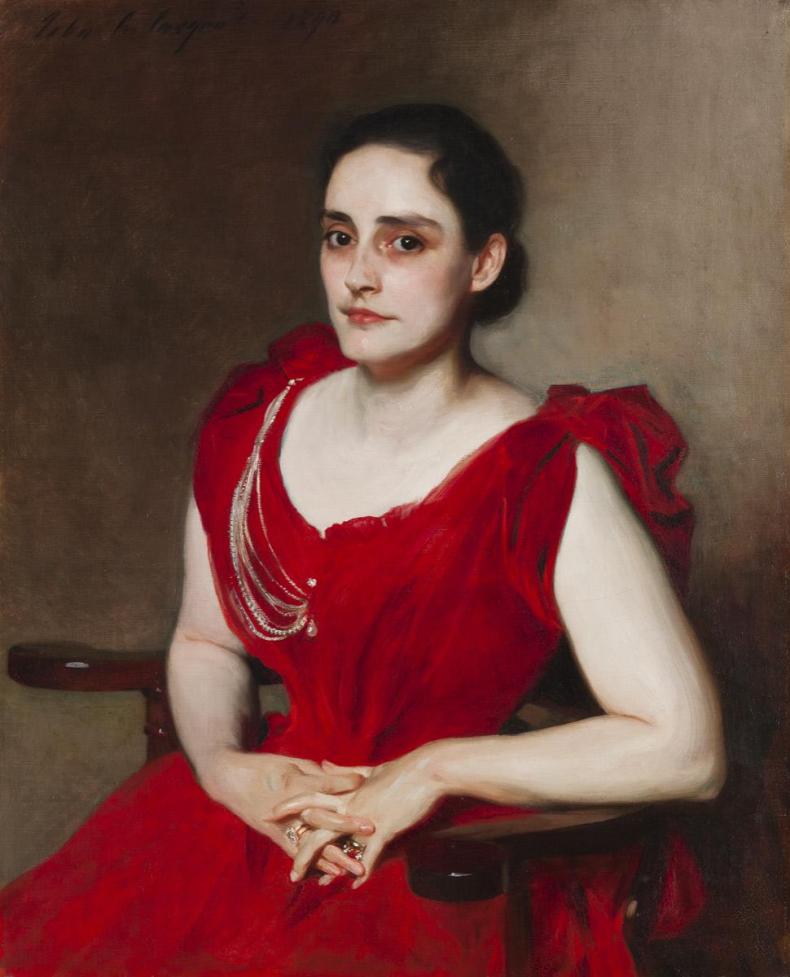
Worcester enjoyed a string of other star arrivals. In 1927 it was the first US museum to buy a whole building – a 12th- century Romanesque chapter house from Le Bas-Nueil in France – and install it as a permanent exhibit, an idea that spread through the country. Under Francis Henry Taylor, director from 1931–39 and again in 1955–57 (he spent the hiatus as director of the Metropolitan Museum of Art), the museum supported the excavations in Antioch in the 1930s, as a result of which Worcester has one of the country’s finest collections of Roman mosaics. In 1940, Mary Ellis, wife of local newspaper owner Theodore T. Ellis, donated the couple’s spectacular collection of European and American paintings that spanned Carlo Crivelli to J.M.W. Turner. It included a small panel depicting A Miracle of Saint Donatus of Arezzo (c. 1479), then attributed to Lorenzo di Credi, and now to be the focus of an exhibition suggesting it should be reattributed to Leonardo.
View of the Chapter House of the Benedictine Priory of Saint John at Le Bas-Nueil, 1150–90, France. Worcester Art Museum, Massachusetts
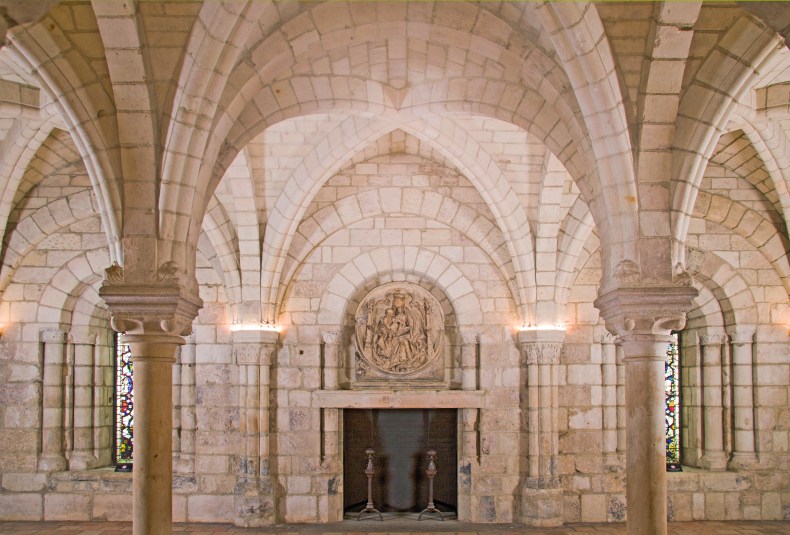
In 1981, James A. Welu, then chief curator, attributed a painting of St John the Baptist in a local church to Andrea del Sarto, a painter rarely represented in the US. Locals raised funds for the museum to buy it. Welu went on to be director for 25 difficult years, from 1986–2011. ‘Jim saved the museum twice,’ Waschek says. He built on Worcester’s education programme to create the first Art All-State Program for high-school artists, which continues today, and the museum now has academic programmes at a dozen colleges and universities. Welu’s most important exhibition focused on the Dutch Golden Age master Judith Leyster, held at Worcester and the Frans Halsmuseum in Haarlem in 1993; Leyster’s A Game of Tric-Trac (c. 1631) had been donated to the museum a decade earlier.
More recently, under Waschek’s directorship, the arrival of the 2,000-piece John Woodman Higgins collection of Renaissance arms and armour, after the Higgins Armory Museum closed in 2013, has been transformative: Worcester now has the second most important collection of its kind in the US, after the Met. About 150 pieces will go on view in 2019 in the repurposed library building; the rest will go into open storage. Some items are already scattered through the galleries, positioned to complement historic paintings – one of its 24 full suits of armour now stands next to Jan Brueghel the Elder’s Venus at the Forge of Vulcan (1606–23). In 2017 the Henry Luce Foundation awarded one of its largest grants ever – $825,000 – to support the museum’s American art collection in a three-year programme that includes cataloguing and displaying the Goodspeed Collection, and exhibiting stained glass by John La Farge and Louis Comfort Tiffany, made for Boston’s Mount Vernon Congregational Church and not seen for 40 years.
A Game of Tric-Trac (c. 1631), Judith Leyster. Worcester Art Museum, Massachusetts
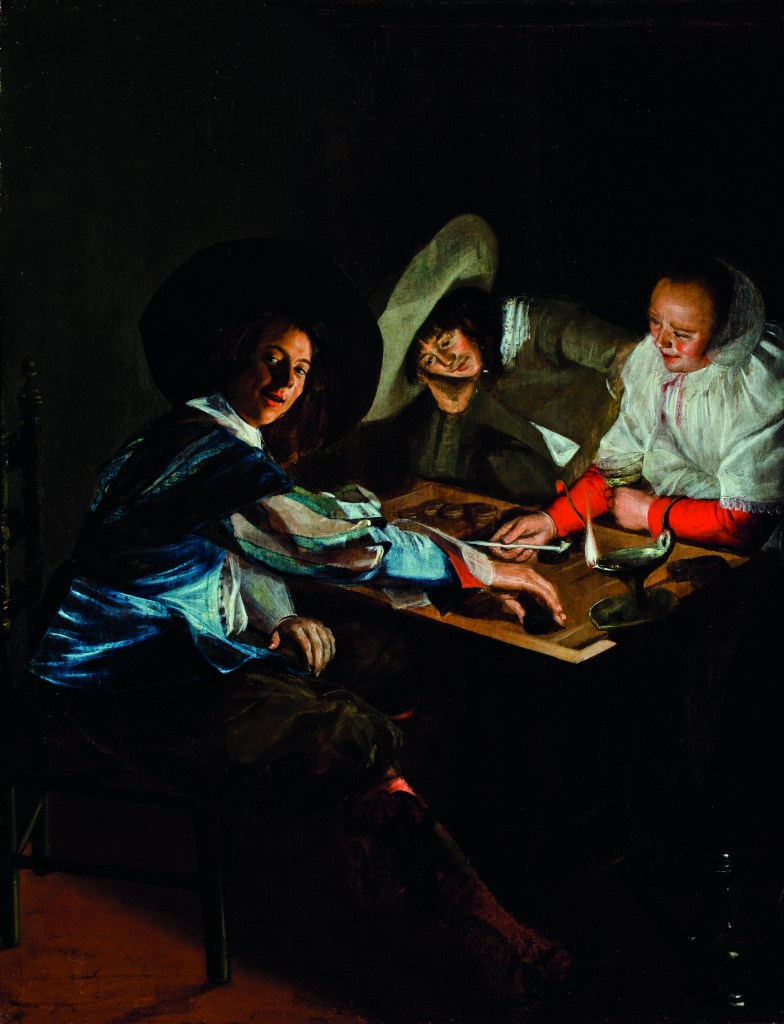
‘We need to be a regional museum and to have a presence in Boston,’ Waschek says. ‘To achieve this, we need to be distinct from the MFA, not a mini-version of it. We have the Roman mosaics, we have the Higgins collection. Above all, we have the intimacy of the galleries, so visitors can experience a narrative of cultures, moving easily from Roman to Renaissance, there’s more connection.’ He also believes that if a smaller museum has a good collection, visitors remember it and are not overwhelmed.
Indeed, there is an appealing intimacy to the small-scale galleries of the museum’s core neoclassical building, designed by Stephen C. Earle. It was here Waschek applied his imagination when he first arrived. ‘There was no money in the kitty and thus no exhibition calendar,’ he says. But he needed to make his mark. First, he reopened the main entrance, just as Rogers had done at the MFA Boston: ‘Both of us are Europeans, we think about public spaces. The message is now clear, it’s a welcome.’ Then he looked inside the building. ‘I had some data: visitors spend one minute in a gallery, that’s three minutes in three galleries. The museum was a highway!’ To slow people down, Waschek was inspired by Dulwich Picture Gallery for wall colours, and by stately homes, especially in France, where the pictures are hung tilted forward ‘so they come into your space’. He also admired how Lambert Krahe, director of the Düsseldorf Academy in the late 18th century, broke with the baroque tradition of hanging pictures frame to frame and gave each painting space, preserving their identity and encouraging viewers to discuss and draw comparisons. Waschek took this approach in the European galleries, adding licks of paint, taking down wall labels, tilting pictures, and installing armchairs that face not the paintings, but the corners of the rooms. ‘People stop and gaze, talk to each other, walk about all over a gallery, and sit looking to left and right comparing pictures. Now they spend seven minutes in a gallery!’ he says.
The museum’s holdings of Asian art are especially rich and broad because Worcester was part of an intellectual and social circle spanning Newport, Boston, and Worcester that became obsessed by Asian art and culture at the turn of the 20th century. The Bancroft Collection was an outright gift (the first such gift of Japanese prints to a US public collection). Ananda Coomaraswamy, a historian of Indian art and the first curator of the Indian collection at the MFA Boston, from 1917 to 1947, would lecture at Worcester and advise on acquisitions. Today, Vivian Li, curator of Asian art, is rethinking and reinstalling the galleries to attract the area’s Indian, Vietnamese, and Cambodian communities (the last being the largest outside of Cambodia). She is putting objects in context by adding videos of temples in use, so visitors see how a ritual object in the collection is used in daily life. ‘People are coming to see their own stories, which surprises them, they did not expect a museum to have familiar objects. Asian art is relevant today, a living continuity. Medieval is different, it is past history,’ she says. As well as having a team of trained docents, Li is adding new art to her reinstallations. She has commissioned a jhoola (swing) from a design studio in Ahmedabad in India, which she hopes visitors use to stop, to look and think. She’s hoping to acquire Indian artist Bharti Kheer’s take on the traditional golu dolls made for the Hindu Navratri festival, ‘looking at how we imbue meaning into objects of devotion’. David Roxburgh, professor of Islamic art history at Harvard is curating a show later this year. ‘We want to use the whole collection to open up dialogue, to create an open zone to discuss all aspects of art and culture – codes of conduct, diverse ways of thinking, ideas beyond this life.’
Saint John the Baptist (c. 1517), Andrea del Sarto. Worcester Art Museum, Massachusetts
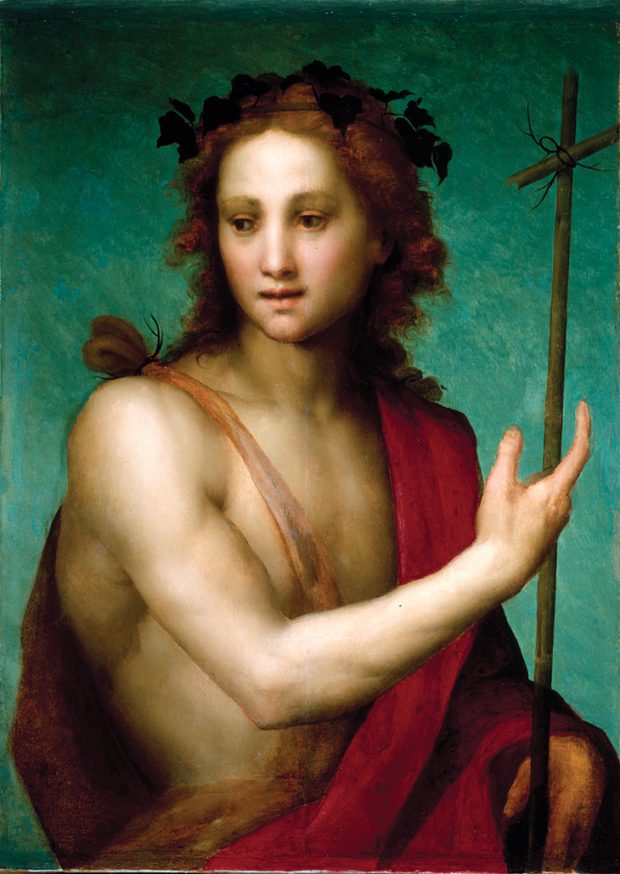
Encouraging more visitors to the medieval galleries demanded, as Li suggests, a different approach. ‘At Worcester, we look at what each subject needs in a gallery to communicate with our audiences,’ says Jon Seydl, director of curatorial affairs from 2014 until recently (he took up the directorship of Krannert Art Museum in February this year). Again, it’s about slowing down the visitor. ‘Here, we experimented with how to deliver information. We emphasise looking and lingering with comfortable seating, books to read, and we worked with our conservation team to explain techniques such as enamelling.’ Seydl contrasts how Worcester chose to display some acquisitions made in 2016 in other galleries. First, he takes Otto Dix’s Pregnant Woman (1931) – a controversial acquisition, which won through when one member of the Collections Committee remarked it was ‘just ugly, why would we want to buy it?’ and was trumped by another saying that the Worcester population may not all understand art, but they do all understand pregnancy. The painting dominates its small gallery setting and challenges its viewer. A substantial wall panel sets it in its historical and cultural interwar context, and people’s reactions in the well-used visitors book record both deep thoughts and instant outrage. Seydl explains the different function of the Belgian artist Philippe-Jacques van Bree’s The Studio of the Flower Painter Van Daël at the Sorbonne (1816). ‘It’s his masterpiece,’ Seydl says. ‘It led us to conserve an 18th-century floral still life we had in the basement, attributed to three Dutch and Flemish painters.’ Both paintings play a central role in Worcester’s annual flower festival, which makes visitor numbers spike by 4,000, with many visitors coming for the first time.
The museum is now in a very different position from when Waschek arrived. Temporary exhibitions are back. A recent show, ‘Coming Away: Winslow Homer and England’, was crowded every day. It included about 10 of the museum’s own Homer works, among them The Gale (1883–93), which set a record for an American painting when Worcester bought it in 1916. And conservation work plays an increasingly vigorous role at the museum. At its analytical lab, established with help from the Andrew W. Mellon Foundation, staff are at the forefront of developing Reflectance Transformation Imaging (RTI), which advances the ability to examine and document surface topographies of artworks. It was RTI, together with other analysis methods, that Worcester applied to its two Hogarth paintings, thanks to a grant from TEFAF, returning them to their original glory.
A Miracle of Saint Donatus of Arezzo (c. 1479), attributed to Lorenzo di Credi and Leonardo da Vinci. Worcester Art Museum, Massachusetts
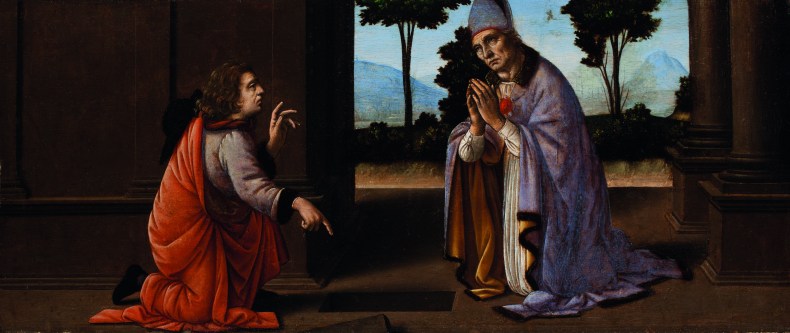
The new exhibition, ‘The Mystery of Worcester’s Leonardo’ (10 March–3 June), is the result of two decades of study by chief conservator Rita Albertson. The highly focused, single-gallery show brings together the museum’s little A Miracle of Saint Donatus at Arezzo and the Louvre’s Annunciation, both parts of the predella of an altarpiece made for Pistoia’s cathedral around 1479–85. Extensive and collaborative research by Albertson, Laurence Kanter of Yale University Art Gallery, and Bruno Mottin of the C2RMF in Paris presents scientific and connoisseurial study to set out the complexity of attribution and to propose new thoughts on the young Leonardo’s activities and Renaissance workshop practices.
The show argues that both panels, usually attributed to Lorenzo di Credi, were mainly painted by Leonardo – both painters worked in Verrocchio’s workshop. It will be controversial, of course. But Albertson has her research set out, and Kanter’s catalogue for his own Leonardo exhibition at Yale (29 June–7 October) will be published during the Worcester show. ‘It had a 19th-century frame with glass, and a key to open it,’ Albertson explains. ‘About twenty years ago Larry (Laurence Kanter) comes walking through, takes a close look and says “Gee, I wonder if Leonardo could have done this?” We took it off the wall and downstairs. I’ve been working on it ever since.’ It’s been a marathon. For years no art historians would come and look, they recycled the Lorenzo di Credi theories. Now the Worcester panel has jumped from relative obscurity into the global Leonardo limelight.
‘No one doubts its authenticity,’ Albertson continues. ‘It’s the only altarpiece painting from Verrocchio’s workshop that has matching documents. The two paintings clearly belong to each other physically – the wood, the size. But Verrocchio’s studio all used egg tempera; our Worcester picture is oil. Leonardo was an early adopter of oil, liked it, was good at it. Verrocchio never painted in oil.’ X-rays have revealed several hands including, Albertson believes, those of Lorenzo di Credi and Leonardo. Her intense study of it means she knows it ‘so well I know the things that are right, the things that are wrong, the depiction of light, a fold of yellow drapery, attention to an eyeball.’ She points to new ideas – ‘the organic trees in the landscape’, ‘gold highlights like van der Goes and Northern painters used’ and ‘modelling done in a new way that cannot be done with egg tempera. Leonardo was obsessed with experimentation, Credi was not.’ To this, Kanter adds that what has most amazed him about the Worcester panel is how art historians will ‘read and read before they look’.
The exhibition plays fully into Waschek’s ambition for Worcester: ‘We leverage our small size. The question is: how do we make our collection a better and better experience? How do we encourage visitors to linger, look and discover?’
From the March issue of Apollo. Preview and subscribe here.
